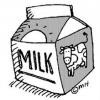Rb20Det Oil Pump Clearance And Checking
Announcements
-
Similar Content
-
Latest Posts
-
By TurboTapin · Posted
There are a few different ways of doing it. I'm currently running two 1000cc pre-TB nozzles and PWM the pump for control. I'll be moving over to a constant pressure system and direct port. I'll run the pump off a regular relay, have it cycle on roughly 5psi before I start injecting to build pressure and then PWM a WMI solenoid (It's basically an injector that can take a lot of pressure and not corrode with water and meth.) The solenoid feeds the 6 direct port ~200cc nozzles. I'll also keep one ~250cc pre-TB nozzle to help keep IAT's in check. Safety will be a little different as well. I used to use a pressure switch but will be moving over to a pressure sensor between my solenoid and nozzles. I'll trigger my solenoid and if I don't see specific pressure within a specific timeframe (e.g 100psi within a second, 175psi within 2 seconds), I kill it and revert back to non WMI maps the same way I did it before with 4D in Haltech. I was just figuring out the timers in my ecu last night. They made that a little more complicated than I would have liked... I wish Haltech offered a larger set of logic/math functions like other ecu's do. I can't do very much with just AND's and OR's. I've been asked to do fuel/ignition mapping on a medium bore engine at work in May (192L V16). Being the only programmer in my region and having went and opened my mouth about knowing the ins and outs of fuel/ignition mapping, I have now been deemed an expert. Fun fun. The entirety of the logic and algorithms are programmed in C on a PLC. As I spend more time figuring it all out, I like what I see and eventually I may consider doing the same as a pet project to replace my ecu. -
By Dose Pipe Sutututu · Posted
This would be interesting, would you feed it via a 2nd row of injectors? Or just usual WMI nozzles? -
By SLVRBAKSLPZ · Posted
All, What's the recommended torque for the 1/2 head studs for RB30 twin cam conversion with RB26 head? -
also, we need to know which solution worked....
-







Recommended Posts
Create an account or sign in to comment
You need to be a member in order to leave a comment
Create an account
Sign up for a new account in our community. It's easy!
Register a new accountSign in
Already have an account? Sign in here.
Sign In Now